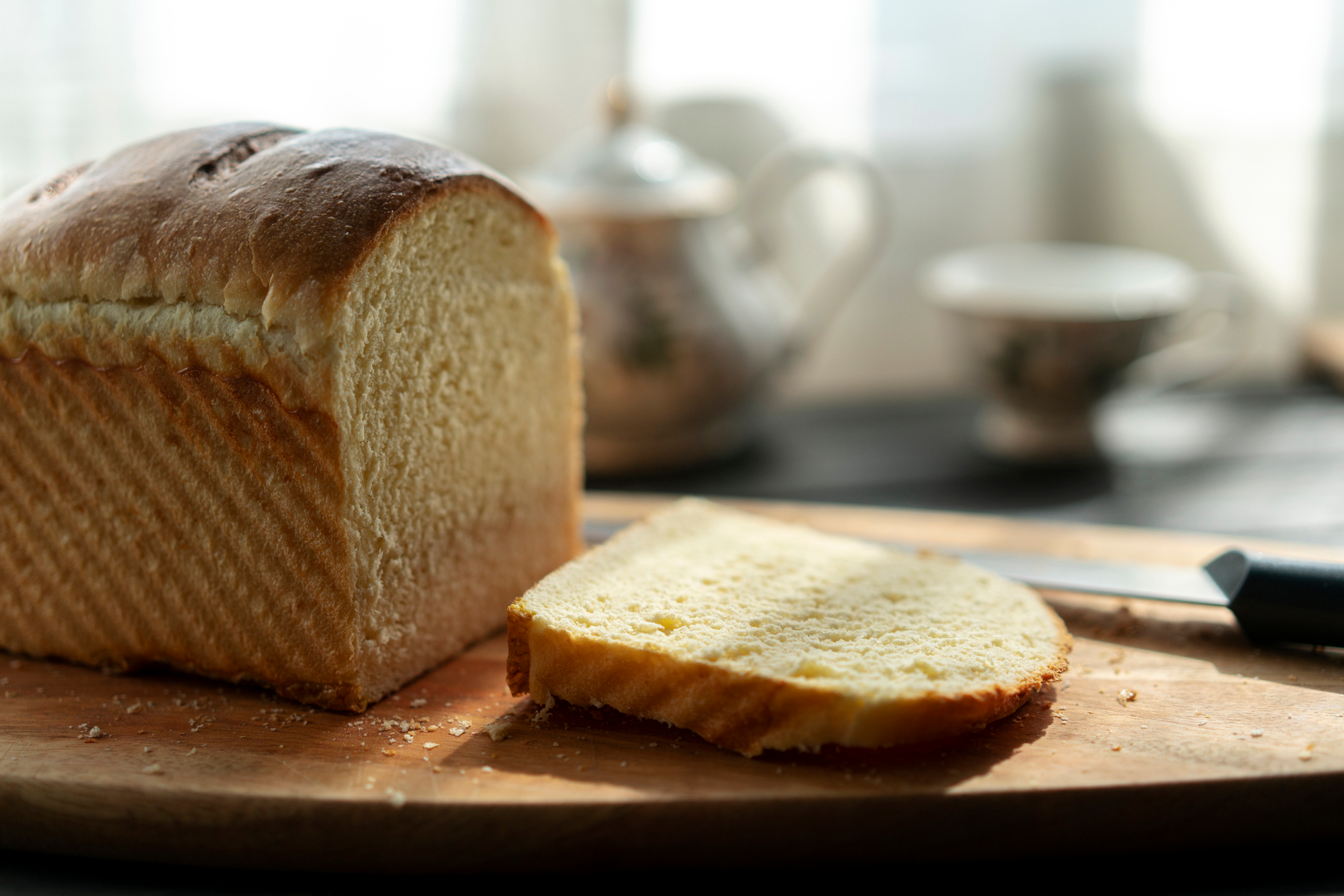Here's A Simple—but Not Basic!—recipe For A Nice, Plain White Bread
With everyone baking sourdough these days, the poor folks who are not keeping a starter (that is, a new pet) are being neglected a bit. There's no shame in not wanting an artisanal super crusty loaf. Sometimes you want a very basic versatile bread that uses regular old yeast and doesn't need to be baked in a superheated Dutch oven.
This is that bread for me. Enriched with vegetable shortening, it's a very pliable and easy dough to work with. It proofs overnight in the fridge, so I can make it the night before and then bake it anytime the following day. It can be formed into any shape or size. The recipe makes two large loaves or a ton of rolls, depending how you form them. It isn't a fancy bread, but it's a satisfying one. Feel free to experiment.

Basic White Bread
- 2 (2¼-tsp.) packets dry active yeast dissolved in 1 cup warm water
- 1 cup vegetable shortening
- 1 cup boiling water
- ¾ cup sugar
- 2 eggs, beaten
- 2 tsp. kosher salt
- 6 cups all-purpose flour
- 1-2 sticks butter, melted, depending on style of bread
Put the shortening in a large bowl and pour over the boiling water to dissolve it completely. Add sugar, salt, eggs, flour, and dissolved yeast. Mix well, put into a lightly greased bowl, cover tightly with plastic wrap, and refrigerate overnight.
At this point, you need to decide what kind of bread you desire.
For sandwich bread, divide the dough into two parts. Pat each out into a 9-inch-wide rectangle about an inch thick, then roll up the rectangle from the long side so you have a 9-inch-long roll. Place each roll in a greased 9x5 loaf pan, seam side down. Brush the tops with melted butter and cover lightly with plastic wrap. Let rise at room temperature for two to three hours or until doubled in size, then bake at 350 degrees Fahrenheit for 30-40 minutes until the loaves are golden brown and they sound hollow when tapped. (If you are worried about underbaking, properly baked enriched bread like this will have an internal temperature of 200 degrees Fahrenheit on a meat thermometer.) Cool in the pans for 10 minutes, then turn out onto a rack and let cool completely before slicing.
For challah style bread, divide dough in half, and then divide each half into three parts. Roll each part into a long strand, and then braid them together. Place the braided loaves on a greased sheet pan, with at least four inches between them. Paint with melted butter, cover lightly with plastic wrap, and let rise at room temperature for two to three hours or until doubled in size. Before baking, brush with an egg wash if desired, and feel free to add a topping like sesame or poppy seeds. Bake at 350 degrees Fahrenheit for 30-40 minutes.
For basic rolls, spray the bottoms of two 9x13 roasting pans with nonstick spray. Divide the dough into 30 equal-sized pieces and roll them into balls. (Or you can roll each ball into a snake and tie it in a knot.) Place 15 rolls in each pan, keeping even spaces between them, and then paint the tops with the melted butter. Cover with plastic wrap. Let rise for two to three hours at room temperature or until doubled in size, and then bake at 350 degrees Fahrenheit for 20 to 30 minutes, or until golden brown.
For cloverleaf-style rolls, roll out the dough to about one inch thick and use a small biscuit cutter to cut it into rounds. Dip three rounds in melted butter and stack, then place the stacks on their sides in buttered muffin tins. (For Parker House-style rolls, form the dough into small balls and put three balls in each cup.) Let the rolls rise for two to three hours or until doubled in size, and bake at 350 degrees Fahrenheit for 20 to 25 minutes, or until golden brown and cooked through.
For rings of break-away bread, roll out the dough to about one inch thick and cut it into 3x3 squares. Dip each square in melted butter (add cinnamon sugar for more of a monkey bread feel) and stack the squares sort of willy-nilly in two greased bundt pans. Or make 4x4 squares and stack on their ends into 2 loaf pans for peel-away loaves. Let rise two to three hours or until doubled in size. Bake at 350 degrees Fahrenheit for 30-35 minutes or until browned.
This dough also freezes well. Flash-freeze rolls or loaves on a parchment-lined sheet pan and then transfer them to a ziptop bag once they're frozen solid. When you're ready to bake, arrange your rolls in a greased baking vessel or on a greased sheet pan, brush them lightly with melted butter, cover with plastic wrap, and let them thaw overnight in the fridge. Proof at room temperature for two to three hours before baking.
